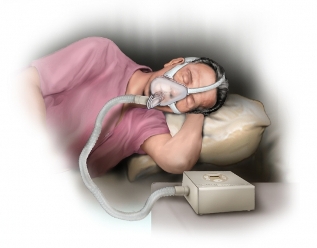Pressure airway positive continuous bi level therapy 1175 wjc heart failure v6 i11
Table of Contents
Table of Contents
Continuous positive airway pressure therapy is a technique used to treat sleep-related breathing disorders such as sleep apnea. It involves using a machine to provide a continuous flow of air pressure through a mask worn over the nose and/or mouth during sleep. While this therapy is effective in treating sleep disorders, individuals may experience difficulties with the equipment or feel discomfort during initial use. Troubleshooting tips can help to ensure successful use of continuous positive airway pressure therapy.
Users of CPAP therapy may experience difficulties with mask fit, equipment maintenance, or air leaks. These pain points can make daily use frustrating and impact the effectiveness of the treatment. However, with proper troubleshooting and maintenance, these issues can be resolved.
The target of continuous positive airway pressure therapy is to improve sleep quality, reduce daytime fatigue, and reduce the risk of health issues related to sleep apnea. Troubleshooting tips aim to address common problems that individuals may face during use of the CPAP machine and improve the overall effectiveness of treatment.
In summary, continuous positive airway pressure therapy is an effective way to treat sleep apnea. However, it is important to address common issues that may arise during use, such as mask fit or equipment maintenance. By following proper troubleshooting tips, individuals can ensure they get the most out of their CPAP therapy.
Personal Experience with Continuous Positive Airway Pressure Therapy and Troubleshooting Tips
After being diagnosed with sleep apnea, I was prescribed a CPAP machine. Initially, I felt discomfort with the mask and experienced air leaks. However, by working with my healthcare provider and following troubleshooting tips, I was able to resolve these issues. Now, I wake up feeling rested and refreshed, and I no longer experience daytime fatigue.
Common Issues with Continuous Positive Airway Pressure Therapy and Troubleshooting Tips
One common issue users may face is mask discomfort or air leaks. To address mask discomfort, it is important to make sure the mask fits properly and is not too tight or loose. If experiencing air leaks, check that all connections are secure and replace old or worn out parts as needed. Additionally, make sure to clean and maintain equipment regularly to ensure proper functioning.
Maintenance of Continuous Positive Airway Pressure Therapy Equipment
To maintain CPAP equipment, it is important to clean the mask and tubing daily with mild soap and warm water. Replace filters as needed and periodically check for damage or wear on equipment parts. It is also important to consult the user manual for specific maintenance instructions from the manufacturer.
Breathing Techniques for Successful Use of Continuous Positive Airway Pressure Therapy
Learning proper breathing techniques can improve the effectiveness of CPAP therapy. For example, slowly inhaling and exhaling through the nose can help to reduce air leaks. Additionally, taking deep breaths before putting on the mask can improve the initial fit and reduce discomfort.
Question and Answer
Q: How do I know if my CPAP equipment needs replacement?
A: Signs that equipment may need replacement include increased noise, difficulty regulating air pressure, or visible signs of wear or damage. Consult the manufacturer’s instructions for specific recommendations on when to replace equipment parts.
Q: How can I improve mask fit?
A: Improving mask fit involves finding the right size mask and adjusting straps for comfort. Experiment with different types of masks to find the best fit for your face shape and sleeping position. Consult your healthcare provider if still experiencing difficulties with mask fit.
Q: Can I travel with my CPAP equipment?
A: Yes, most CPAP equipment is portable and can be easily transported during travel. Be sure to bring all necessary parts and accessories, and consult with your airline for specific guidelines and restrictions.
Q: Can I use a CPAP machine if I have a cold or congestion?
A: It is generally okay to use a CPAP machine if experiencing a mild cold or congestion. However, consult with your healthcare provider for specific recommendations and adjustments to treatment during times of illness.
Conclusion of Continuous Positive Airway Pressure Therapy and Troubleshooting Tips
Continuous positive airway pressure therapy is an effective treatment for sleep apnea but can come with challenges for users. Troubleshooting tips can help address common issues such as mask discomfort and equipment maintenance, improving the effectiveness and overall experience of CPAP therapy. By following these tips and consulting with a healthcare provider as needed, individuals can achieve restful and refreshing sleep.
Gallery
Continuous Positive Airway Pressure [37]. (Internet, Google Images
![Continuous positive airway pressure [37]. (Internet, Google images Continuous positive airway pressure [37]. (Internet, Google images](https://www.researchgate.net/profile/Mohammed_Jaradat4/publication/281926605/figure/fig2/AS:668370873643016@1536363442451/Continuous-positive-airway-pressure-37-Internet-Google-images-CPAP-first-page-PAP.png)
Photo Credit by: bing.com / airway continuous cpap pap
Continuous Positive Airway Pressure Therapy | Nursing Information

Photo Credit by: bing.com / pressure continuous positive airway therapy
Continuous Positive Airway Pressure (CPAP) Devices Market

Photo Credit by: bing.com / pressure positive airway continuous cpap devices types market machine breathing bipap different insights premium press release
Mechanism Of Action Of Continuous Positive Airway Pressure Therapy IV

Photo Credit by: bing.com / airway pressure positive continuous therapy iv
Positive Airway Pressure Therapy For Heart Failure

Photo Credit by: bing.com / pressure airway positive continuous bi level therapy 1175 wjc heart failure v6 i11




